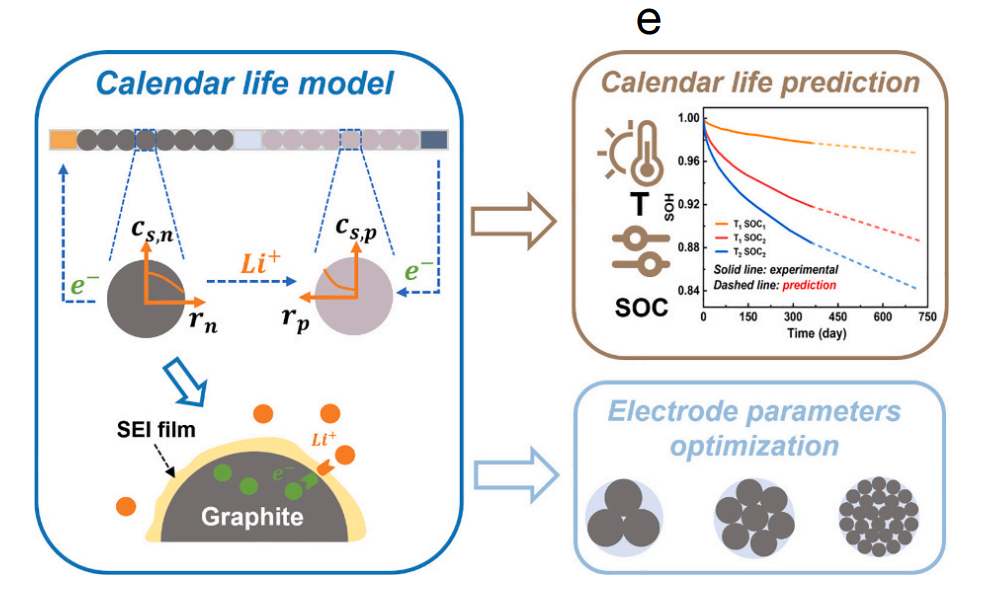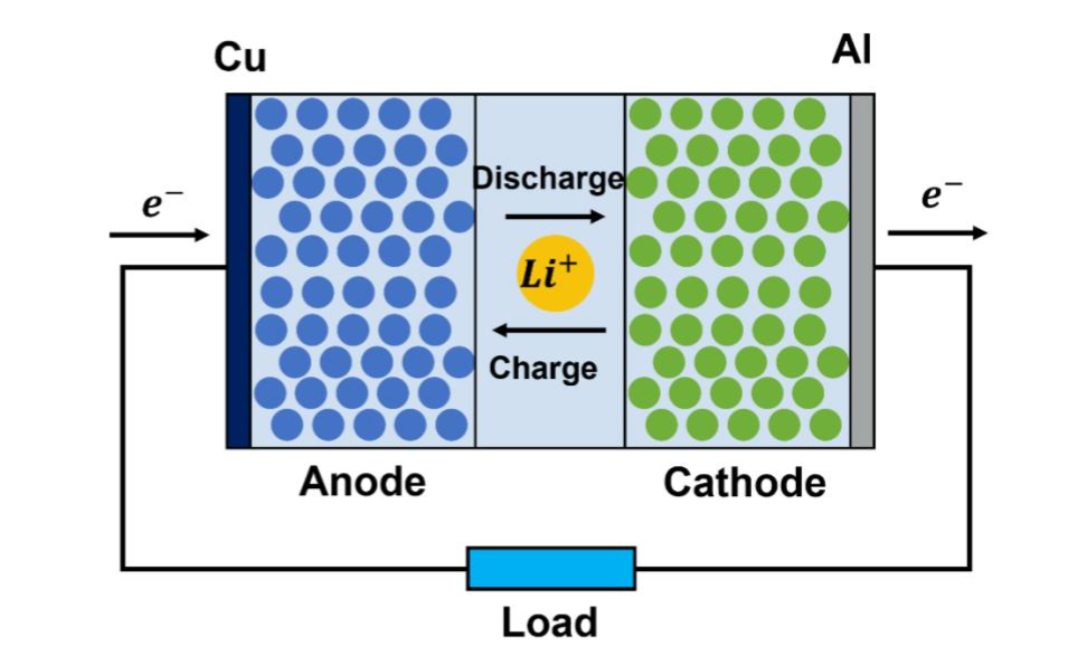LiFePO4||graphite battery is considered the ideal energy storage device for electric vehicles and stationary energy storage, owing to its high safety, high energy density and low cost. In various battery application scenarios, the major general manifestations of battery aging are observed during use and upon storage, with progressive capacity loss and an increase in internal resistance due to side reactions at the electrolyte-electrode interfaces. The fact that batteries spend >80% of their lifetime in a parked or non-operational condition implies storage degradation may contribute more than cycle aging. Therefore, a comprehensive knowledge and accurate modeling of the calendar aging process is a key but challenging issue for achieving intelligent battery management. Existing empirical models are characterized by rapid computing speed and a simple model description, they frequently lack specific information on the internal deterioration process of LIBs and are therefore unsuitable for optimizing battery design.

The research team from the Division of New Energy & Material Chemistry and their collaborators recently published the research titled with ‘Electrochemical model boosting accurate prediction of calendar life for commercial LiFePO4|graphite cells by combing solid electrolyte interface side reactions’ in Applied Energy, the graphical abstract of this work is below.

In this work, a calendar life prediction model is developed for commercial large-capacity LiFePO4|graphite LIBs based on the pseudo-two-dimensional (P2D) electrochemical model integrated with solid electrolyte interface (SEI) growth side reactions and an empirical degradation rate model for reliability research. The excellent agreement between the model and the experimental storage data over a wide range of temperatures (−40◦C ~ 70◦C) and SOCs demonstrates the high-fidelity of the model. The structure of P2D model is illustrated below.

This work develops a physics-based model to investigate the calendar aging of LiFePO4|graphite batteries. During the calendar loss of LIBs, the SEI film growth reaction is incorporated into the negative electrode as the primary side reaction in this model. Throughout a wide range of temperatures (−40◦C ~ 70◦C) and at different SOCs (50%, 100%), the capacity and DCIR of a 103Ah prismatic LIB (measured capacity) that had been stored for 6 months agreed well with the model prediction. Based on the validated model, a modeling analysis is carried out to find potential solutions for mitigating the calendar aging of Li-ion batteries by optimizing the design of electrode structure parameters. The proposed study provides a modeling framework for battery prognostics and health management for estimating and predicting the calendar aging life of commercial prismatic large-capacity 103Ah LiFePO4|graphite cells, which shows significant progressiveness and practical application value.
Link to article: https://www.sciencedirect.com/science/article/pii/S0306261924015587
Introduction to laboratory:
https://mp.weixin.qq.com/s/fTt_URwjfK_svhOPd6ipJA

Postdoctoral fellows are recruited all year round. For details, please visit the website of Tsinghua University Postdoctoral Fellow and apply online: http://postdoctor.tsinghua.edu.cn/
For consultation, please send an email to:
hexm@tsinghua.edu.cn (the subject of the email should be indicated: apply for postdoctoral fellowship)